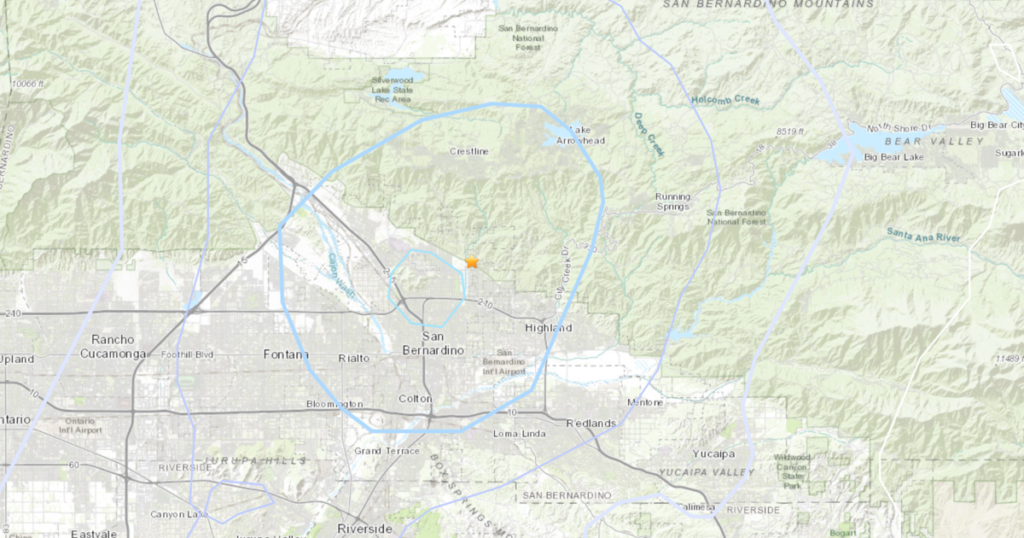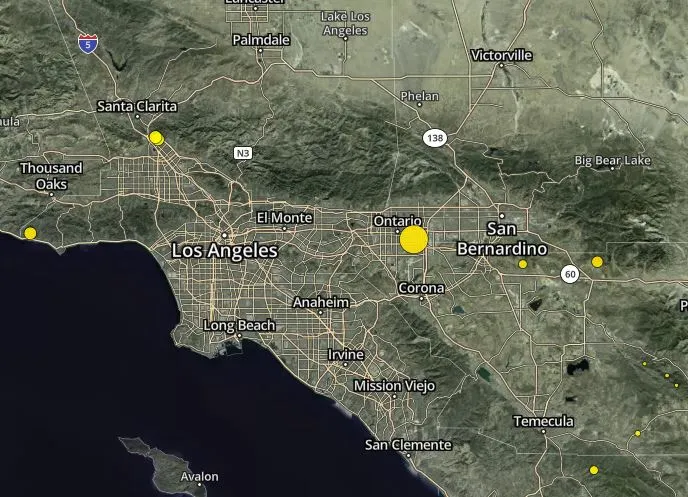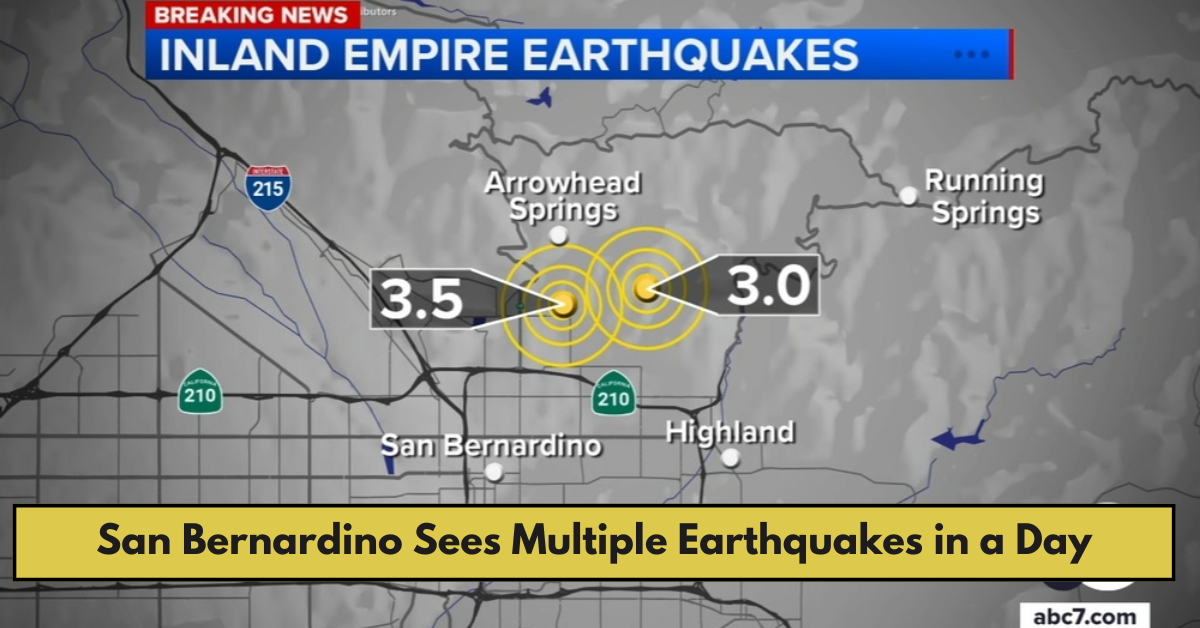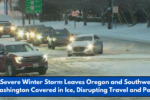San Bernardino, CA – A 3.6-magnitude earthquake struck the San Bernardino area Monday evening, marking the third tremor to hit the region in a single day. According to the U.S. Geological Survey (USGS), the quake was recorded at 9:58 p.m. local time, approximately three miles north-northeast of San Bernardino, at a depth of 5.1 miles.
Series of Quakes in the Region
Earlier in the day, two additional earthquakes were felt in the area:
- 9:44 a.m.: A 3.5-magnitude earthquake struck at a depth of 4.6 miles.
- 9:47 a.m.: A 3.0-magnitude tremor followed, occurring near the same location.
The latest 3.6-magnitude quake capped off a day of seismic activity that had many residents on edge. Fortunately, no major damage or injuries have been reported at this time, according to local authorities.

Residents Report Feeling Shaking
The quakes were felt across San Bernardino, Riverside, Victorville, and Hesperia, with residents describing light to moderate shaking. Some reported hearing a low rumbling sound before feeling the tremors.
“I was sitting on my couch when I felt a little jolt,” said Maria Lopez, a resident of San Bernardino. “It wasn’t too strong, but it definitely caught my attention.”
Others took to social media to express their concerns about the frequency of earthquakes in the area. While Southern California is no stranger to seismic activity, experiencing three tremors in a single day is relatively uncommon but not unheard of.
What Caused the Earthquakes?
According to seismologists at Caltech, the recent tremors are likely related to the San Andreas Fault system, which runs through Southern California.
“Small earthquakes like these are a reminder that we live in a seismically active region,” said Dr. Lucy Pearson, a geophysicist with the Southern California Earthquake Center (SCEC). “While these particular tremors weren’t large, they demonstrate the importance of earthquake preparedness.”
Learn more about earthquake science at the Southern California Earthquake Center
Is This a Sign of a Bigger Earthquake?
Experts emphasize that small earthquakes do not necessarily indicate that a larger one is imminent. However, seismic swarms – clusters of small quakes in a short period – can sometimes precede larger seismic events.
“The probability of a major earthquake occurring right after a smaller event remains low, but we always encourage people to be prepared,” said Dr. Pearson.
The USGS estimates a less than 5% chance that these quakes could be foreshocks to a larger seismic event, but residents should remain vigilant and ensure they have emergency plans in place.
How to Prepare for Future Earthquakes
In light of these tremors, officials are urging residents to review their earthquake preparedness plans and ensure they have the necessary supplies. Here are some essential steps to take:
- Create an Emergency Kit: Include non-perishable food, water, a flashlight, batteries, a first-aid kit, and medications to last at least 72 hours.
- Secure Your Home: Anchor heavy furniture, secure loose items, and know how to shut off gas, water, and electricity in case of an emergency.
- Practice Drop, Cover, and Hold On: In the event of a quake, drop to the ground, cover your head and neck, and hold on to a sturdy surface until the shaking stops.
- Have a Family Plan: Establish a meeting point and communication plan in case family members are separated.

Authorities Monitoring the Situation
Local emergency services and seismic monitoring organizations will continue to track aftershocks and provide updates as needed. Residents are encouraged to stay informed by signing up for earthquake alerts through the MyShake App and the USGS Earthquake Notification Service (ENS).
Looking Ahead
While Monday’s earthquakes did not result in significant damage, they serve as a stark reminder of California’s seismic reality. With the state being home to several active fault lines, experts stress the importance of preparedness and staying informed about potential seismic activity.
For the latest earthquake updates and safety resources, visit:
- U.S. Geological Survey (USGS)
- California Earthquake Authority (CEA): www.earthquakeauthority.com
- Ready.gov Earthquake Preparedness
This article has been carefully fact-checked by our editorial team to ensure accuracy and eliminate any misleading information. We are committed to maintaining the highest standards of integrity in our content.

A senior at Yale-NUS College with interests in developmental and labour economics, as well as creative non-fiction and poetry. Currently, I’m studying as an Economics major and an Arts and Humanities minor (focusing on Creative Writing) with heavy involvement in the Singaporean journalism scene and involved in research on economic history and educational policy. I’m working as an author for The Octant, Yale-NUS’ student publication, as a writer for Wingspan, Yale-NUS’ alumni magazine, and as a tutor for the NUS Libraries Writer’s Centre. | Linkedin




